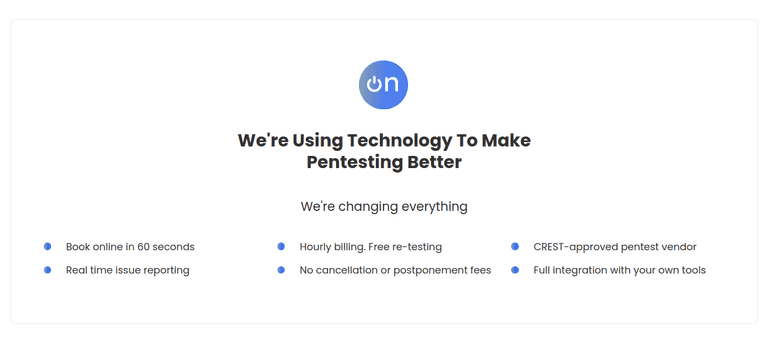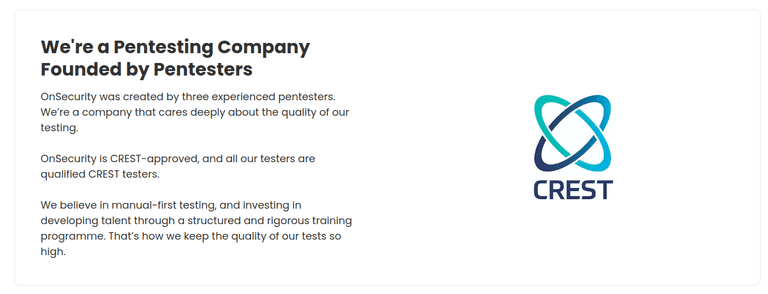What is Cloud Security?
Securely storing and processing data in the cloud, or using cloud platforms to develop services, has never been more accessible, so we have created some guidance to help you do so securely.
With cloud usage continuing to rapidly increase, both in volume and the type of services being built and hosted on the cloud. It is important we take appropriate steps to safeguard our assets online.
Who can this hub help?
All organisations can utilise our free cloud security hub to assist with navigating the ‘the cloud’, and the management models which underpin their use.
More particularly: If you're already using cloud services, feel free to browse our various topics and maybe you might learn something new.
Not familiar with the regulations around the cloud? Check out our overview below.
If it's cloud penetration testing services that are required, you can request an instant quote for our first class service.
An overview of cloud security
Cloud security is a set of procedures and technology that aim to mitigate both external and internal threats to business security. As organisations move towards digital transformation and incorporate cloud-based tools and services into their infrastructure, cloud security becomes a crucial component.
The terms digital transformation and cloud migration are commonly used in the business world, and while they can mean different things for different organisations, they are both driven by the need for change. However, as enterprises adopt these concepts and strive to optimise their operations, they face new challenges in balancing productivity levels and security.
Modern technologies can help businesses expand beyond on-premise infrastructure, but transitioning primarily to cloud-based environments can have significant implications if not done securely.
To strike the right balance, it's crucial to understand the benefits of interconnected cloud technologies and implement the best cloud security practices. By ensuring that your organisation is well-equipped with cloud security measures, you can confidently make the most of the advantages that cloud technologies offer, while keeping your cloud data secure.
What is cloud computing?
The term "cloud" or "cloud computing" refers to the process of accessing software, resources, and databases over the internet, outside of local hardware constraints. Cloud technology provides organisations with flexibility when it comes to scaling their operations by allowing them to offload their infrastructure management to third-party hosting providers. Typical cloud computing services usually fall into one of these categories:
-
Infrastructure-as-a-Service (IaaS): This is a hybrid approach where organisations can manage some of their own cloud data and applications on-premise while relying on cloud computing providers to manage servers, hardware, networking, virtualization, and storage needs.
-
Platform-as-a-Service (PaaS): This service streamlines application development and delivery by providing a custom application framework that automatically manages operating systems, software updates, storage, and supporting infrastructure in the cloud.
-
Software-as-a-Service (SaaS): Cloud-based software hosted online and typically available on a subscription basis. Third-party providers manage all potential technical issues such as data, middleware, servers, and storage, minimising IT resource expenditures and streamlining maintenance and support functions.
Cloud providers offer numerous benefits to organisations and cloud users looking to streamline their operations and reduce overall costs in their cloud computing environment.

Cloud security definition
Cloud security refers to the set of policies, technologies, and controls deployed to protect data, applications, and infrastructure associated with cloud computing. It involves securing the cloud environment from unauthorised access, data breaches, and other threats, as well as ensuring compliance with relevant regulations and industry standards.
Cloud security covers various aspects, including network security, data security, identity and access management, compliance, disaster recovery, and incident response. It is a critical aspect of cloud computing as it enables organisations to safely store and access their data and applications in the cloud while maintaining the necessary security and privacy standards.
Why is Cloud Security Important?
For businesses making the transition to the cloud, robust cloud security is imperative. There are several reasons why cloud security is crucial for businesses, including:
- Data Security:
Cloud security solutions help protect sensitive cloud data and prevent unauthorised access to it. This is particularly important for businesses that handle sensitive cloud data such as financial information, intellectual property, and personal information of their customers.
- Compliance:
Businesses must comply with regulatory requirements such as GDPR, HIPAA, and PCI-DSS. Cloud security ensures that businesses are compliant with these regulations by implementing security controls that align with the required standards.
- Business Continuity:
Cloud security helps ensure business continuity by providing protection against cyber attacks and other security threats. By implementing security measures such as data backups, disaster recovery, and continuity planning, businesses can minimise the impact of security breaches and quickly resume operations in the event of an attack.
- Cost Savings:
Implementing cloud security measures can help businesses save money by preventing security breaches and reducing the risk of data loss. In addition, cloud security solutions such automated vulnerability scanning and threat detection can help businesses identify potential security issues before they become major problems, saving time and money in the long run.
Types of cloud environments
There are three main types of cloud computing environments to choose from. These include public clouds, private clouds, and hybrid clouds. Each of these environments comes with its own unique set of security concerns and benefits, making it crucial to understand the differences between them.
Public clouds
These are cloud environments offered by third-party service providers and are accessible to the public. Public clouds are cost-effective and scalable, but can pose security challenges due to shared infrastructure and limited control over security measures.
Private clouds
These are dedicated cloud environments hosted either on-premises or by a third-party provider for a single organisation. Private clouds offer greater control over security measures and are ideal for organisations that require enhanced security and compliance.
Hybrid clouds
These combine elements of public and private clouds and provide organisations with the flexibility to leverage the benefits of both cloud types. However, hybrid clouds can pose unique security challenges due to their complexity.
What are some cloud security challenges?
As OnSecurity, we recognize that while the cloud and cloud services offer many benefits, it also presents several challenges when it comes to security. Some of the top cloud security challenges businesses face when it comes to cloud security include:
-
Keeping our data secure: Protecting data is one of the biggest challenges in cloud security. With data being stored in the cloud and accessed from multiple devices and locations, it's critical to ensure that data is encrypted, properly secured, and accessible only to authorised users.
-
Insider Threats: Insider threats are a major concern in cloud security. With employees having access to sensitive data and applications in the cloud, it's important to have measures in place to prevent unauthorised access, monitor activity, and detect any suspicious behaviour.
-
Compliance: Compliance is a challenge when it comes to cloud security. Businesses must ensure that they are complying with regulatory requirements such as GDPR, HIPAA, and PCI-DSS. This requires implementing security controls that align with the required standards and regularly auditing their security measures to ensure they remain compliant.
-
Shadow IT: Shadow IT is a major challenge in cloud computing. Employees may use unauthorised cloud services and applications that do not meet the business's security standards, potentially exposing sensitive data to security risks.
-
Third-Party Providers: Third-party providers such as cloud service providers and software vendors are another challenge in cloud security. Businesses must ensure that they are working with reputable providers that have strong security measures in place and that they have a clear understanding of their roles and responsibilities when it comes to security.
At OnSecurity, we help our clients address these and other challenges by providing comprehensive security solutions that are tailored to their specific needs. Our team of experts stays up-to-date on the latest security threats and trends, and we work closely with our clients to develop a customised security strategy that provides maximum protection for their business.
What should be included in a Cloud Security Strategy?
As OnSecurity, we recommend that businesses adopt a multi-layered approach to the cloud to ensure maximum protection. A comprehensive cloud computing security strategy should include the following:
-
Data Security: Data encryption is a critical component of cloud security. Businesses should ensure that all data stored in the cloud is encrypted both at rest and in transit to protect it from unauthorised access.
-
Access Control: Businesses should implement strong authentication mechanisms, such as multi-factor authentication, to ensure that only authorised users can access sensitive data and applications in the cloud.
-
Network Security: Network security is essential for protecting data and applications in the cloud. Businesses should implement firewalls, intrusion detection and prevention systems, and other security measures to prevent unauthorised access and protect against cyber attacks.
-
Cloud Provider Security: A cloud provider will have their own security measures in place, but it's important for businesses to understand their provider's security policies and ensure that they align with their own security requirements.
-
Security Monitoring: Continuous monitoring of cloud systems and applications is critical for identifying and responding to security threats in real-time. Businesses should use automated tools such as vulnerability scanners and security information and event management (SIEM) solutions to detect and respond to security incidents as quickly as possible.
-
Cloud Penetration Testing: Ensuring our environment is secure is a vital step. We can achieve this by having experienced testers to review the security configurations of the cloud environment.
Cloud penetration testing allows you to identify any risks in your cloud environment and compare them against industry best practices. See our cloud security penetration testing webpage for more information.
By implementing a multi-layered approach, businesses can ensure that their data and applications are protected against a wide range of security threats and maintain business continuity.
At OnSecurity, we work closely with our clients to develop a personalised cloud penetration testing strategy that takes into account their specific security needs and requirements.
We assess best practices, potential misconfigurations and other security issues which may lead to data exposure or unauthorised access in order to ensure that your environment is configured in as secure a manner as possible.
For further information, or if you have any specific enquiries around this please contact us or request an instant quote now!
What makes cloud security different?
We understand that cloud security is different from traditional IT security in several ways. Here are a few key factors that make cloud security unique:
-
Shared Responsibility Model: Cloud service providers operate on a shared responsibility model, which means that both the provider and the customer have a role to play in securing data and applications in the cloud. This means that businesses need to understand their cloud provider's security policies and ensure that they are taking appropriate measures to protect their own data and applications. You can read more about the shared responsibility model here.
-
Dynamic Environment: Cloud environments are dynamic, with resources and applications being added, removed, and reconfigured frequently. This makes it challenging to maintain a consistent security posture across the entire cloud infrastructure.
-
Data Privacy and Compliance: Cloud service providers are subject to various data privacy and compliance regulations, such as GDPR and HIPAA. Businesses need to ensure that their cloud provider is compliant with these regulations and that their own security measures align with the requirements.
-
Increased Attack Surface: Cloud based environments can have a much larger attack surface than traditional IT environments, with multiple entry points and potential vulnerabilities. This requires businesses to take a multi-layered approach to security that includes network security, access control, and data encryption, among other measures.
By understanding the differences between cloud security and traditional IT security, businesses can establish a strong security posture in the cloud and protect their data and applications from a wide range of security threats.

Cloud Compliance and Governance
The UK has several regulatory frameworks and standards that govern cloud computing, including the Data Protection Act (DPA), the General Data Protection Regulation (GDPR), and the Cyber Essentials Scheme.
However, the National Institute of Standards and Technology (NIST) is also widely recognized as a key framework for cloud compliance and governance, and many UK organisations use it as a reference.
NIST provides guidelines and best practices for managing risk and implementing security controls in cloud environments. Its Cloud Computing Security Publication (SP 800-146) is particularly relevant for cloud compliance and governance in the UK. The publication outlines a risk management framework that includes five core functions: identify, protect, detect, respond, and recover. It also provides specific guidance for implementing security controls across different cloud deployment models, including public, private, and hybrid clouds.
To ensure compliance with NIST and other regulatory frameworks, UK organisations should adopt a comprehensive approach to cloud governance that includes policies, procedures, and technical controls. This may involve conducting risk assessments, establishing security baselines, and implementing continuous monitoring and auditing. It's also important to work with cloud service providers that are transparent about their security measures and can demonstrate compliance with relevant regulations and standards.
In summary, NIST provides a useful framework for cloud compliance and governance in the UK, and organisations should take a comprehensive approach to ensure compliance with relevant regulations and standards.
The Shared Responsibility Model
The Shared Responsibility Model is a widely accepted framework that defines the security responsibilities of both cloud service providers (CSPs) and their customers. This model is designed to help clarify the division of responsibilities and ensure that security is not overlooked in the cloud.
Under the Shared Responsibility Model, the CSP is responsible for the security of the cloud infrastructure and the physical security of the data centre. This includes securing the network, storage, and computing resources that make up the cloud environment.
On the other hand, the customer is responsible for securing their data and applications that are hosted in the cloud. This includes data encryption, access control, and identity and access management.
It's important to note that the exact division of responsibility can vary depending on the specific CSP and the type of service being used. It's also worth noting that while the CSP may provide certain security tools and features, it's ultimately the responsibility of the customer to ensure that these tools are properly configured and utilised.
Identity and access management
Identity and Access Management (IAM) is a critical component of cloud security. IAM refers to the processes and technologies that are used to manage cloud users' identities and their access to cloud resources and services.
One of the main challenges of IAM with cloud computing is ensuring that users have appropriate access to resources and services based on their roles and responsibilities, while also maintaining the security of the overall system. This requires a robust identity and access management strategy that includes processes for identity provisioning and deprovisioning, role-based access control, and multi-factor authentication.
Cloud providers offer various IAM solutions that organisations can leverage to manage their user identities and access control. For example, AWS offers AWS IAM, which enables organisations to manage users, groups, and permissions for their AWS resources. Similarly, Microsoft Azure offers Azure Active Directory (Azure AD), which provides a cloud-based identity and access management solution for Microsoft services.
Organisations can also leverage third-party IAM solutions that provide more advanced features and capabilities, such as identity federation and single sign-on (SSO). These solutions enable organisations to manage user identities across multiple environments and on-premises systems, providing a unified view of user identities and access control policies.
Hybrid Cloud
As OnSecurity, we understand that many organisations today operate in a hybrid IT environment, with some applications and data residing in the cloud and others on-premises. Hybrid environments offer many benefits, such as increased flexibility, scalability, and cost savings, but they also present unique security challenges.
Hybrid security is a security strategy that seeks to address these challenges by integrating security controls across both on-premises and cloud environments. This approach enables organisations to maintain a consistent security posture across their entire IT infrastructure, regardless of where their data and applications reside.
One of the key challenges of hybrid security is ensuring that security policies and procedures are consistent across all environments. This can be particularly challenging when dealing with multiple cloud providers, each with their own security policies and procedures. Hybrid security solutions seek to address this challenge by providing a unified view of security across all environments, enabling organisations to monitor and manage security policies and procedures from a single dashboard.
Another important aspect of hybrid security is ensuring that data and applications are protected as they move between on-premises and cloud environments. This requires robust encryption and access control measures, as well as network security controls that can detect and respond to potential threats.
Finally, hybrid security also requires a strong focus on compliance, particularly when dealing with data privacy regulations such as GDPR and HIPAA. Organisations need to ensure that their hybrid security strategy meets the requirements of these regulations, both in terms of data protection and reporting.

How to choose a cloud service provider?
To choose the right cloud service provider, follow these steps:
Identify your business needs, such as data storage, applications, and security requirements. Evaluate the provider's reputation by checking their website, reading reviews, and speaking with existing customers.
Assess the provider's security and compliance measures, including data encryption and regulation compliance.
Evaluate the provider's service offerings, including IaaS, PaaS, and SaaS, and look for features like scalability and disaster recovery.
Consider pricing, including hidden costs, and ensure that it aligns with your budget. Evaluate the provider's support options, including 24/7 customer support and proactive monitoring.
You can find a full breakdown of our recommended steps in our “How to choose a cloud service provider” over on our blog.

Take the next step.
How can OnSecurity help?
OnSecurity is able to provide penetration testing activities against your AWS, Azure and GCP environments.
Cloud penetration testing allows you to identify any risks in your cloud environment and compare them against industry best practices. Our test methodologies, processes, policies and procedures have been externally vetted by CREST to ensure we are operating to the highest standards possible in the pentesting industry.
We assess best practices, potential misconfigurations and other security issues which may lead to data exposure or unauthorised access in order to ensure that your environment is configured in as secure a manner as possible.
For further information, or if you have any specific enquiries around this please contact us or request an instant quote now!

OnSecurity is a CREST-approved vendor, and we offer a wide range of industry leading global penetration testing services to our clients.
